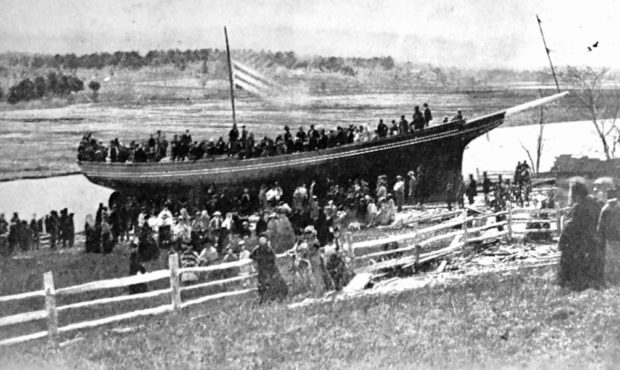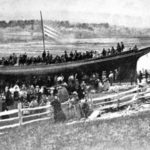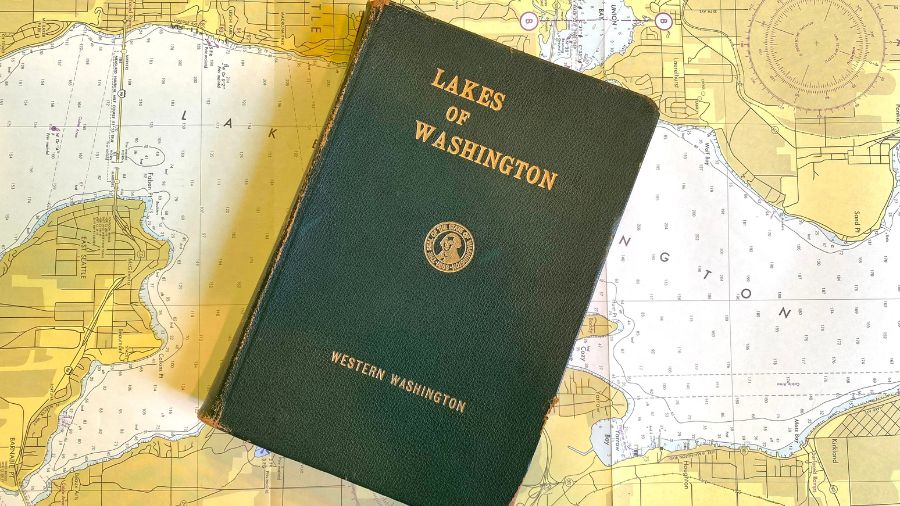All Over The Map: Vanished shipyards connect Pacific Northwest and Boston
Feb 19, 2021, 6:29 AM | Updated: 7:21 am
Thousands of miles from the Pacific Northwest, a quiet, rural river near Boston was once home to bustling shipyards with a direct connection to the Columbia River.
The North River is about 40 minutes south of Boston by car. It’s narrow, marshy in stretches, and meanders through the communities of Scituate, Norwell, Hanover, Marshfield and Pembroke in a part of Massachusetts known as the South Shore.
While the setting is quiet and residential now, it was there, in 1773, that a ship eventually sailed by fur trader Robert Gray to the Northwest Coast of North America was built. That three-masted ship was called the Columbia. It measured 83 feet long, 24 feet wide, and had a draft of 11 feet.
As many Northwest history buffs know, it was on May 11, 1792, that Captain Gray sailed into the mouth of what appeared to be a big river along the Pacific coast, in a general area where a river had been suspected to exist, and that had been sought by Europeans for a century or more. It was the same river that British explorer Captain Vancouver had missed just a few weeks earlier. Gray named it “Columbia’s River” after his ship; the fact that the long-sought river was explored and named by an American would have political and geographical ramifications for decades to come.
If you visited the North River in 2021, other than cast-iron historical markers installed a hundred years ago — which actually face the river, and not the road — chances are you’d likely have no idea that the riverbank was home to more than a dozen shipyards from 1640 to the 1870s, and that hundreds of wooden ships were built there.
Caleb Estabrooks lives in Hanover, Massachusetts, along the river on the site of one of the old shipyards. He’s been researching for years, and gives lectures and presentations about what he and his colleagues have found – in the archives as well as along the banks of the North River.
Estabrooks says the North River made sense as a place to locate shipyards more than 300 years ago because the river had easy access to the Atlantic Ocean, and was fairly protected from wind and extreme tides. More importantly, the North River was lined with the raw materials of wooden shipbuilding: lots of trees, including pine and oak.
The North River is a popular destination for kayakers, and Estabrooks has explored it extensively, comparing the handful of old maps, photos, and paintings that exist to search for any remaining evidence of the once-bustling industrial area. With a metal detector, he and his family have found all kinds of old tools, including a seven-foot long saw blade from a “pit saw,” which is, essentially, a hole in the ground where a two-man saw team could cut big timbers for shipbuilding.
The Columbia is believed to have been built at James Briggs Shipyard, which was on the north bank of the North River in the town of Norwell, at a spot called Hobart’s Landing. To the untrained eye, there’s nothing left that would give any indication of the work that took place there hundreds of years ago.
Even when the river was bustling with hundreds of workers, Estabrooks says that there wasn’t much – as far as infrastructure is concerned – to a shipyard in the centuries of shipbuilding along the North River.
“They didn’t have any large buildings,” Estabrooks said. “They probably would have had one small workhouse, which would have been used to store the tools and keep any drawings and the more delicate items in them.”
A shipyard along the North River was “mostly a bunch of raw materials laying around, maybe a saw pit, and a fire pit for heating up tar pitch for coating the bottoms [of the vessels] with pitch.”
Shipbuilding along the North River gradually died out in the mid 19th century, as demand for larger vessels meant that the river was too small for modern ships, and as more and more vessels were made from steel rather than wood.
The old workhouses are long-gone, but Estabrooks says that in a few spots along the river, if you know where to look and when the tide is low enough, you can still see evidence of the “ways” — the large oak ramps used to slide finished hulls from dry land into the river.
Caleb Estabrooks is one of only several history enthusiasts who have devoted significant time to understanding and sharing stories of the North River.
Scott Babcock has lived along the North River in Norwell, Massachusetts, since 1950. He turns 80 next month, and has known about the North River’s connection to the Columbia River for most of his life. He loves the history, and he knows stories about many of the old shipyards, and points out that the ship at Disneyland’s Tom Sawyer Island is a replica of the Columbia, built for the amusement park in 1958.
At his 50th college reunion at Dartmouth several years ago, Babcock ran into an old classmate named Steve who had relocated to Portland, Oregon. This gave Babcock an idea for commemorating the history of the North River and the Columbia, and uniquely honoring the latter’s namesake.
“I said to him, ‘Steve, if I took some water from the North River and sent it to you, would you pour it into the Columbia River?’” Babcock said. “And he said, ‘No, but I’d have my wife do it, and I would take her picture while she’s doing it, because she’s much better looking than I am.’ And I said, ‘Yes, that’s true. She is much better looking.’”
“So I went out and scooped up some water and went to the post office and they said, ‘Is there any liquid in this package, anything that’s flammable?’” Babcock continued. “And I said, ‘No, just some water from the North River,’ and I told them the story and they kind of looked at me and shook their head and said, ‘That poor old fellow’s getting a little bit doty, but, you know, OK.’”
Special thanks to Caleb Estabrooks and Scott Babcock for sharing their enthusiasm, expertise, and photos with KIRO Radio for this story, and to the Norwell Historical Society for helping put us in touch.
You can hear Feliks every Wednesday and Friday morning on Seattle’s Morning News and read more from him here. If you have a story idea, please email Feliks here.























